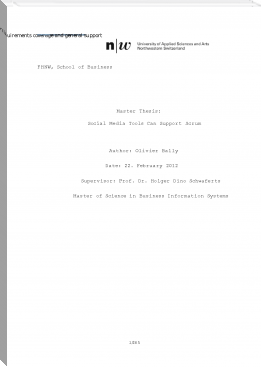Organisational Management A Global Scenario by syed sajid (reading in the dark .txt) 📕

Excerpt from the book:
Organizational Management is fundamental to creating an environment that supports continuous improvement of individuals and their organizations to better provide for the communities they serve. Every organization needs a leader with a clear understanding of the issues facing their organization and is prepared to implement them while maintaining operational functions, developing employee skills, and managing human resources. This topic area includes human resources checklists, sample evaluations, and plans for efficient business operations
Management in all business and human organization activity is the act of getting people together to accomplish desired goals and objectives. Management comprises planning, organizing, staffing, leading or directing, and controlling an organization (a group of one or more people or entities) or effort for the purpose of accomplishing a goal. Resourcing encompasses the deployment and manipulation of human resources, financial resources, technological resources, and natural resources
Management in all business and human organization activity is the act of getting people together to accomplish desired goals and objectives. Management comprises planning, organizing, staffing, leading or directing, and controlling an organization (a group of one or more people or entities) or effort for the purpose of accomplishing a goal. Resourcing encompasses the deployment and manipulation of human resources, financial resources, technological resources, and natural resources
Read free book «Organisational Management A Global Scenario by syed sajid (reading in the dark .txt) 📕» - read online or download for free at americanlibrarybooks.com
Download in Format:
- Author: syed sajid
Read book online «Organisational Management A Global Scenario by syed sajid (reading in the dark .txt) 📕». Author - syed sajid
mapped to R/3 General Ledger Accounts.
Existing Code Type of R/3 Account Proposed Number Range
1. Assets
AXXXXXXXX
(e.g. A17010001 Cash on Hand Treasurer)
Asset Account 100000 through 199999
(e.g. 101001 Cash on Hand + Business Area 1117)
2. Liabilities
AXXXXXXXX
(e.g. A01560005 A/P Knoxville)
Liability Account 200000 through 299999
(e.g. 256005 Accounts Payable + Business Area 1101)
3. Type of Fund Balance or Reserve
(e.g. 99 Balance or 84 Reserve for Encumbrances)
Fund Balance Account 300000 through 399999
(e.g. 399000 Unreserved Fund Balance or 384000 Fund Balance Reserved for Encumbrances)
4. Expenditure Object Codes
(e.g. 391 Operating Supplies)
5. Ledger Activity Codes for Expenditures and Transfers Out (e.g. 050 Charges for Routine Expense)
Expenditure Account 400000 through 499999
(e.g. 439100 Operating Supplies)
6. Major and Minor Sources of Funds
(e.g. 0101 Tuition and Fees Resident Enrollment)
7. Ledger activity codes for Income and Transfers In
(e.g. 001 Endowment Income – UT Endowments)
8. Income activity codes XX
(e.g. 01 Rent) Revenue Accounts 700000 through 799999
(e.g. 701010 Tuition and Fees Resident Enrollment)
Controlling and Project System Master Data (CO, PS and PCA)
Revenue Elements
Revenue elements are used to classify revenues in Controlling. They are linked to revenue GL accounts on a one-for-one basis and have the same number and description. E.g. Revenue Element 701010 Tuition and Fees Resident represents GL Account 701010 Tuition and Fees Resident in CO.
Cost Elements
Cost elements are used to classify costs in CO according to object of expenditure.
Primary Cost Elements represent expenditure GL Accounts in CO. They are linked to Expenditure GL accounts on a one-for-one basis and have the same number and description. E.g. Cost Element 439100 Operating Supplies represents GL Account 439100 Operating Supplies in CO.
Proposal: Primary cost elements will be set up for all expenditure GL Accounts.
Secondary cost elements are used for internal allocations within a controlling area such as overhead. These cost elements are not directly linked to an Expenditure GL account.
Proposal: Ledger Activity Codes for 010 Facilities and Admin Costs and similar internally allocation costs will be mapped to secondary cost elements. Secondary cost elements will be set up in the range 500000 to 599999. E.g. 501000 - Facilities and Admin Costs.
Cost Center and Cost Center Hierarchy
A Cost Center is a unit within a controlling area that represents a revenue and cost collector for permanent activities. A cost center can be linked to a company code, a business area, a functional area, a fund, a fund center and a profit center allowing all these codes to be automatically defaulted when a user enters a cost center in a document. Costs and revenues posted to a cost center can thus be automatically posted to the company code, business area, fund, fund center and profit center linked to the cost center.
A standard hierarchy of cost centers is required for the controlling area and is used by drill-down reports. In addition Cost Centers may optionally belong to additional alternative hierarchies that can also be used by drill-down reports.
Proposal: The University will use Cost Centers to represent its current unrestricted income and expenditure accounts (I and E accounts) in R/3. All E accounts with seven-digit numbers will be represented by cost centers with the same seven-digit number. All I and E accounts with nine-digit numbers will be represented by cost centers with ten-digit numbers. The ten-digit number will be created by adding a zero in the eighth position in the ten-digit number. E.g. Account E01102401 will be represented by cost center E011024001.
The standard cost center hierarchy will be used to represent the organizational groupings to show Fund Group >Budget Entity >Function > College or Division > Department> Cost Center (7 digit) > Cost Center (10 digit). An alternative hierarchy will be created to represent the State Appropriation hierarchy.
Figure 4 shows the relationship between a cost center and other master data and organizational elements.
Figure 4
Work Breakdown Structure Element (WBS Element) and WBS Element Group
A WBS element is an element in a project work breakdown structure (WBS) and is used as a revenue and cost collector for activities with discrete start and end dates. At least one WBS element must exist in a project. A WBS element can be linked to a company code, a business area, a functional area (through substitution), a fund, a fund center and a profit center allowing all these codes to be defaulted when a user enters a WBS Element in a document. Costs and revenues posted to a WBS Element can be automatically posted to the company code, business area, fund, fund center and profit center linked to the WBS Element. Additionally, collected costs may be billed or automatically transferred to cost centers or GL Accounts periodically.
There is no standard hierarchy required for WBS elements. WBS Elements can be grouped together into WBS Element Groups for reporting.
Proposal: The University will use WBS Elements to collect revenues and costs associated with cost-reimbursable grants, and all other funds other than current unrestricted funds. Thus WBS elements will be used to collect revenues and costs for current restricted funds, endowment, annuity and life income funds, plant funds, loan funds and agency funds. For example a balance account for restricted funds (B Account) with a nine-digit number, will be represented by a WBS Element with a nine-digit number. The nine-digit number will be created by replacing the fourth and fifth digit with two zeros. E.g. Account B01991024 will be represented by WBS Element B01001024. An expenditure account for restricted funds (R Account) with a nine-digit number will be represented by a WBS Element with a ten-digit number. The ten-digit number will be created by adding a zero in the eighth position. E.g. Account R01102410 will become WBS Element R011024010. Related B and R accounts as in the above case will appear in the same project structure.
Figure 5 shows the relationships between a WBS Element and other master data and organizational elements.
Profit Center and Profit Center Hierarchy
A Profit Center is an organizational unit in R/3, within which costs and revenue can be analyzed. Costs and revenues posted to cost centers and WBS Elements can be automatically posted to profit centers.
A standard profit center hierarchy is required and is used by drill-down reports, and multiple alternative profit center hierarchies can be created to be used by drill-down reports.
Proposal: The University will use Profit Centers to represent its reporting organization units in R/3 so that reports can be created across cost centers and WBS element by organizational unit. The profit center number will be based on the department number. For example, department 011002401 will be mapped to profit center L011002401.
The standard profit center hierarchy will be used to represent the reporting organizational groupings to show Budget Entity >College or Division > Department.
Funds Management Master Data
Commitment Item and Commitment Item Hierarchy
Commitment items represent budget and fund accounting classifications of GL Accounts and cost elements in the Funds Management Module. They are thus used to reflect the type of revenues and expenditures being budgeted and also to detail balances for each fund in FM.
Proposal: The University will create Commitment items for each Budget Object Code (two digit). For example budget object code 11 – Admin and Professional Salaries will be mapped to commitment item 11 - Admin and Professional Salaries. In addition, all fund balance GL accounts will be mapped to FM on a one-for-one basis and assets and liabilities GL accounts will be mapped to Commitment Items on a many-to-one basis.
Figure 6 shows the relationship between GL accounts, cost elements and commitment items:
Fund
A fund represents the lowest level of funding requiring a budget. The fund master includes an application of fund and one or more sources of funds. Budget rules can be specified separately for each fund.
Proposal: The University will use Funds for storing the budgets and actuals for all its accounts. Only one application of fund will be created for the Current Unrestricted fund group but individual Sources of funds will be created to represent each account. The current unrestricted sources of funds will have the same numbers as the cost centers representing such accounts (seven-digit or ten-digit number). For all other fund groups an application of fund and a source of funds will be created for each account. These sources and applications of funds will have the same number as the WBS Element representing such accounts (ten-digit number). Attributes such as the Vice-Chancellor and Dean/Department codes will be entered into user defined fields on the fund master.
Funds Center and Funds Center Hierarchy
A fund center is the organizational unit responsible for preparing and monitoring the budget for one or more funds. Fund centers are organized into a hierarchy along which the budget flows. Since the budget flows along the fund center hierarchy, no alternative hierarchies are allowed.
Proposal: The University will create fund centers based on the reporting organization hierarchy of Budget Entity> College or Division> Department. The fund center number will be based on the department number. For example, department 011002401 will be mapped to fund center U011002401.
Name: Title: Signature: Date:
¬¬¬________________¬¬¬¬ _______________ _______________
________________ _______________ _______________
________________ _______________ _______________
References
1. Oxford English Dictionary
2. Vocational Business: Training, Developing and Motivating People by Richard Barrett - Business & Economics - 2003. - Page 51.
3. Administration industrielle et générale - prévoyance organisation - commandment, coordination – contrôle, Paris : Dunod, 1966
4. Gomez-Mejia, Luis R.; David B. Balkin and Robert L. Cardy (2008). Management: People, Performance, Change, 3rd edition. New York, New York USA: McGraw-Hill. pp. 19. ISBN 978-0-07-302743-2.
5. Gomez-Mejia, Luis R.; David B. Balkin and Robert L. Cardy (2008). Management: People, Performance, Change, 3rd edition. New York, New York USA: McGraw-Hill. pp. 20. ISBN 978-0-07-302743-2.
6. Craig, S. (2009, January 29). Merrill Bonus Case Widens as Deal Struggles. Wall Street Journal.
7. Kotter, John P. & Dan S. Cohen. (2002). The Heart of Change. Boston: Harvard Business School Publishing.
8. http://managementhelp.org/org_thry/org_defn.htm Imprint
Existing Code Type of R/3 Account Proposed Number Range
1. Assets
AXXXXXXXX
(e.g. A17010001 Cash on Hand Treasurer)
Asset Account 100000 through 199999
(e.g. 101001 Cash on Hand + Business Area 1117)
2. Liabilities
AXXXXXXXX
(e.g. A01560005 A/P Knoxville)
Liability Account 200000 through 299999
(e.g. 256005 Accounts Payable + Business Area 1101)
3. Type of Fund Balance or Reserve
(e.g. 99 Balance or 84 Reserve for Encumbrances)
Fund Balance Account 300000 through 399999
(e.g. 399000 Unreserved Fund Balance or 384000 Fund Balance Reserved for Encumbrances)
4. Expenditure Object Codes
(e.g. 391 Operating Supplies)
5. Ledger Activity Codes for Expenditures and Transfers Out (e.g. 050 Charges for Routine Expense)
Expenditure Account 400000 through 499999
(e.g. 439100 Operating Supplies)
6. Major and Minor Sources of Funds
(e.g. 0101 Tuition and Fees Resident Enrollment)
7. Ledger activity codes for Income and Transfers In
(e.g. 001 Endowment Income – UT Endowments)
8. Income activity codes XX
(e.g. 01 Rent) Revenue Accounts 700000 through 799999
(e.g. 701010 Tuition and Fees Resident Enrollment)
Controlling and Project System Master Data (CO, PS and PCA)
Revenue Elements
Revenue elements are used to classify revenues in Controlling. They are linked to revenue GL accounts on a one-for-one basis and have the same number and description. E.g. Revenue Element 701010 Tuition and Fees Resident represents GL Account 701010 Tuition and Fees Resident in CO.
Cost Elements
Cost elements are used to classify costs in CO according to object of expenditure.
Primary Cost Elements represent expenditure GL Accounts in CO. They are linked to Expenditure GL accounts on a one-for-one basis and have the same number and description. E.g. Cost Element 439100 Operating Supplies represents GL Account 439100 Operating Supplies in CO.
Proposal: Primary cost elements will be set up for all expenditure GL Accounts.
Secondary cost elements are used for internal allocations within a controlling area such as overhead. These cost elements are not directly linked to an Expenditure GL account.
Proposal: Ledger Activity Codes for 010 Facilities and Admin Costs and similar internally allocation costs will be mapped to secondary cost elements. Secondary cost elements will be set up in the range 500000 to 599999. E.g. 501000 - Facilities and Admin Costs.
Cost Center and Cost Center Hierarchy
A Cost Center is a unit within a controlling area that represents a revenue and cost collector for permanent activities. A cost center can be linked to a company code, a business area, a functional area, a fund, a fund center and a profit center allowing all these codes to be automatically defaulted when a user enters a cost center in a document. Costs and revenues posted to a cost center can thus be automatically posted to the company code, business area, fund, fund center and profit center linked to the cost center.
A standard hierarchy of cost centers is required for the controlling area and is used by drill-down reports. In addition Cost Centers may optionally belong to additional alternative hierarchies that can also be used by drill-down reports.
Proposal: The University will use Cost Centers to represent its current unrestricted income and expenditure accounts (I and E accounts) in R/3. All E accounts with seven-digit numbers will be represented by cost centers with the same seven-digit number. All I and E accounts with nine-digit numbers will be represented by cost centers with ten-digit numbers. The ten-digit number will be created by adding a zero in the eighth position in the ten-digit number. E.g. Account E01102401 will be represented by cost center E011024001.
The standard cost center hierarchy will be used to represent the organizational groupings to show Fund Group >Budget Entity >Function > College or Division > Department> Cost Center (7 digit) > Cost Center (10 digit). An alternative hierarchy will be created to represent the State Appropriation hierarchy.
Figure 4 shows the relationship between a cost center and other master data and organizational elements.
Figure 4
Work Breakdown Structure Element (WBS Element) and WBS Element Group
A WBS element is an element in a project work breakdown structure (WBS) and is used as a revenue and cost collector for activities with discrete start and end dates. At least one WBS element must exist in a project. A WBS element can be linked to a company code, a business area, a functional area (through substitution), a fund, a fund center and a profit center allowing all these codes to be defaulted when a user enters a WBS Element in a document. Costs and revenues posted to a WBS Element can be automatically posted to the company code, business area, fund, fund center and profit center linked to the WBS Element. Additionally, collected costs may be billed or automatically transferred to cost centers or GL Accounts periodically.
There is no standard hierarchy required for WBS elements. WBS Elements can be grouped together into WBS Element Groups for reporting.
Proposal: The University will use WBS Elements to collect revenues and costs associated with cost-reimbursable grants, and all other funds other than current unrestricted funds. Thus WBS elements will be used to collect revenues and costs for current restricted funds, endowment, annuity and life income funds, plant funds, loan funds and agency funds. For example a balance account for restricted funds (B Account) with a nine-digit number, will be represented by a WBS Element with a nine-digit number. The nine-digit number will be created by replacing the fourth and fifth digit with two zeros. E.g. Account B01991024 will be represented by WBS Element B01001024. An expenditure account for restricted funds (R Account) with a nine-digit number will be represented by a WBS Element with a ten-digit number. The ten-digit number will be created by adding a zero in the eighth position. E.g. Account R01102410 will become WBS Element R011024010. Related B and R accounts as in the above case will appear in the same project structure.
Figure 5 shows the relationships between a WBS Element and other master data and organizational elements.
Profit Center and Profit Center Hierarchy
A Profit Center is an organizational unit in R/3, within which costs and revenue can be analyzed. Costs and revenues posted to cost centers and WBS Elements can be automatically posted to profit centers.
A standard profit center hierarchy is required and is used by drill-down reports, and multiple alternative profit center hierarchies can be created to be used by drill-down reports.
Proposal: The University will use Profit Centers to represent its reporting organization units in R/3 so that reports can be created across cost centers and WBS element by organizational unit. The profit center number will be based on the department number. For example, department 011002401 will be mapped to profit center L011002401.
The standard profit center hierarchy will be used to represent the reporting organizational groupings to show Budget Entity >College or Division > Department.
Funds Management Master Data
Commitment Item and Commitment Item Hierarchy
Commitment items represent budget and fund accounting classifications of GL Accounts and cost elements in the Funds Management Module. They are thus used to reflect the type of revenues and expenditures being budgeted and also to detail balances for each fund in FM.
Proposal: The University will create Commitment items for each Budget Object Code (two digit). For example budget object code 11 – Admin and Professional Salaries will be mapped to commitment item 11 - Admin and Professional Salaries. In addition, all fund balance GL accounts will be mapped to FM on a one-for-one basis and assets and liabilities GL accounts will be mapped to Commitment Items on a many-to-one basis.
Figure 6 shows the relationship between GL accounts, cost elements and commitment items:
Fund
A fund represents the lowest level of funding requiring a budget. The fund master includes an application of fund and one or more sources of funds. Budget rules can be specified separately for each fund.
Proposal: The University will use Funds for storing the budgets and actuals for all its accounts. Only one application of fund will be created for the Current Unrestricted fund group but individual Sources of funds will be created to represent each account. The current unrestricted sources of funds will have the same numbers as the cost centers representing such accounts (seven-digit or ten-digit number). For all other fund groups an application of fund and a source of funds will be created for each account. These sources and applications of funds will have the same number as the WBS Element representing such accounts (ten-digit number). Attributes such as the Vice-Chancellor and Dean/Department codes will be entered into user defined fields on the fund master.
Funds Center and Funds Center Hierarchy
A fund center is the organizational unit responsible for preparing and monitoring the budget for one or more funds. Fund centers are organized into a hierarchy along which the budget flows. Since the budget flows along the fund center hierarchy, no alternative hierarchies are allowed.
Proposal: The University will create fund centers based on the reporting organization hierarchy of Budget Entity> College or Division> Department. The fund center number will be based on the department number. For example, department 011002401 will be mapped to fund center U011002401.
Name: Title: Signature: Date:
¬¬¬________________¬¬¬¬ _______________ _______________
________________ _______________ _______________
________________ _______________ _______________
References
1. Oxford English Dictionary
2. Vocational Business: Training, Developing and Motivating People by Richard Barrett - Business & Economics - 2003. - Page 51.
3. Administration industrielle et générale - prévoyance organisation - commandment, coordination – contrôle, Paris : Dunod, 1966
4. Gomez-Mejia, Luis R.; David B. Balkin and Robert L. Cardy (2008). Management: People, Performance, Change, 3rd edition. New York, New York USA: McGraw-Hill. pp. 19. ISBN 978-0-07-302743-2.
5. Gomez-Mejia, Luis R.; David B. Balkin and Robert L. Cardy (2008). Management: People, Performance, Change, 3rd edition. New York, New York USA: McGraw-Hill. pp. 20. ISBN 978-0-07-302743-2.
6. Craig, S. (2009, January 29). Merrill Bonus Case Widens as Deal Struggles. Wall Street Journal.
7. Kotter, John P. & Dan S. Cohen. (2002). The Heart of Change. Boston: Harvard Business School Publishing.
8. http://managementhelp.org/org_thry/org_defn.htm Imprint
Text: syed sajid
Publication Date: 03-19-2010
All Rights Reserved
Dedication:
to the almigty
Free e-book: «Organisational Management A Global Scenario by syed sajid (reading in the dark .txt) 📕» - read online now on website american library books (americanlibrarybooks.com)
Similar e-books:





Comments (0)